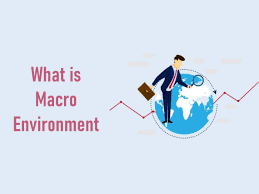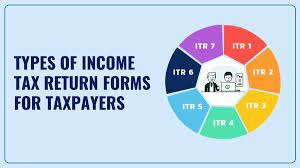Macro Environment
A macro environment refers to the overall, broader economy and the forces affecting it versus a microenvironment, which focuses on a specific sector or region’s economy. There are macroeconomic conditions or factors that affect how all businesses operate, which, in turn, affect the economy as a whole. In general, macroeconomics deals with: Spending Price levels Aggregate production What Is a Macro Environment? A macro environment refers to the set of conditions that exist in the economy as a whole, rather than in a particular sector or region. In general, the macro environment includes trends in the gross domestic product (GDP), inflation, employment, spending, and monetary and fiscal policy. The macro-environment is closely linked to the general business cycle as opposed to the performance of an individual business sector. Analyzing a Macro Environment The macro-environment refers to how the macroeconomic conditions in which a company or sector operates influence its performance. Macroeconomics deals with aggregate production, spending, and the price level in an economy as opposed to individual industries and markets. The amount of the macro environment’s influence depends on how much of a company’s business is dependent on the health of the overall economy. Cyclical industries are heavily influenced by the macro environment, while basic staple industries are less influenced. Industries that are highly dependent on credit to finance purchases and business investments are strongly influenced by changes in interest rates and global financial markets. The macro-environment can also directly affect consumers’ ability and willingness to spend. Luxury goods industries and big-ticket consumer goods can be highly impacted by fluctuations in consumer spending. Consumers’ reactions to the broad macro-environment are closely monitored by businesses and economists as a gauge for an economy’s health. Factors of the Macro Environment Analyzing the macro environment is an important part of strategic management. Business analysts often conduct a PEST (political, economic, socio-cultural, and technological) analysis to identify macro-economic factors that currently affect or in the future may affect business. Some of the key factors composing the macro environment include the following: Gross Domestic Product Gross Domestic Product (GDP) is a measure of a country’s output and production of goods and services. Releases a quarterly report on GDP growth that provides a broad overview of the output of goods and services across all sectors.An especially influential aspect of GDP is corporate profits for the economy, which is another measure of an economy’s comprehensive productivity. Inflation Inflation is a key factor watched by economists, investors, and consumers. It affects the purchasing power . The target rate for annual inflation from 2%. Inflation higher than 2% significantly diminishes the purchasing power , making each unit less valuable as inflation rises. Employment Employment levels are measured , which releases a monthly report on business payrolls and the status of the unemployment rate.regulate employment levels through monetary policy stimulus and credit measures. These policies can ease borrowing rates for businesses to help improve capital spending and business growth, resulting in employment growth. Consumer Spending Consumer spending made up 54% is widely considered to be an important indicator of macroeconomic performance.Slow growth or decline in consumer spending suggests a decline in aggregate demand, which economists consider to be a symptom or even a cause of macroeconomic downturns and recessions. Monetary Policy The Federal Reserve’s monetary policy initiatives are a key factor influencing the macro environment . Monetary policy measures are typically centered around interest rates and access to credit. Federal interest rate limits are one of the main levers of the Federal Reserve’s monetary policy tools. The Federal Reserve sets a federal funds rate for which federal banks borrow from each other, and this rate is used as a base rate for all credit rates in the broader market. The tightening of monetary policy indicates rates are rising, making borrowing more costly and less affordable. Fiscal Policy- Fiscal policy refers to government policy around taxation, borrowing, and spending. High tax rates can reduce individual and business incentives to work, invest, and save. The size of a government’s annual deficits and total debt can influence market expectations regarding future tax rates, inflation, and overall macroeconomic stability. Government spending drives borrowing and taxation; it is also widely used as a policy tool to try to stimulate economic activity during slow times and make up for sluggish, consumer spending and business investment during recessions. FAQs What is the macro environment? The macro environment refers to the larger, external forces that affect an organization’s operations and performance. These factors are generally beyond the control of individual businesses but have a significant impact on their strategies and decision-making. The macro environment includes elements like political, economic, social, technological, environmental, and legal factors (often summarized as the PESTEL framework). What are the key components of the macro environment? Political Factors: Government policies, political stability, tax laws, trade regulations, and political pressures. Economic Factors: Economic growth rates, inflation, unemployment, exchange rates, and overall economic conditions. Social Factors: Demographics, cultural attitudes, lifestyle changes, and population trends. Technological Factors: Innovations, technological advancements, automation, and the impact of new technologies on industries

